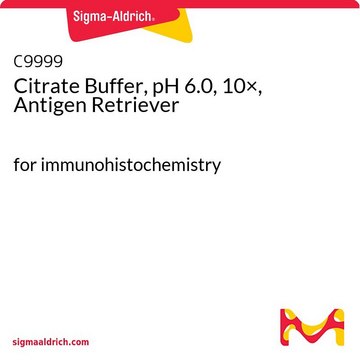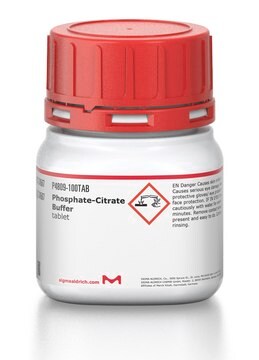C2488
Citrate Buffer Solution, 0.09 M
Sinónimos:
Citric Acid Buffer Solution
About This Item
Productos recomendados
description
Contains 1% chloroform
pH 4.8 at 25 °C.
Quality Level
form
solution
concentration
0.09 M
pH
4.8 (25 °C)
application(s)
diagnostic assay manufacturing
storage temp.
2-8°C
Categorías relacionadas
General description
Application
Other Notes
signalword
Warning
hcodes
Hazard Classifications
Carc. 2 - STOT RE 2 Oral
target_organs
Liver,Kidney
Storage Class
12 - Non Combustible Liquids
wgk_germany
WGK 2
flash_point_f
Not applicable
flash_point_c
Not applicable
ppe
Eyeshields, Faceshields, Gloves, type ABEK (EN14387) respirator filter
Certificados de análisis (COA)
Busque Certificados de análisis (COA) introduciendo el número de lote del producto. Los números de lote se encuentran en la etiqueta del producto después de las palabras «Lot» o «Batch»
¿Ya tiene este producto?
Encuentre la documentación para los productos que ha comprado recientemente en la Biblioteca de documentos.
Nuestro equipo de científicos tiene experiencia en todas las áreas de investigación: Ciencias de la vida, Ciencia de los materiales, Síntesis química, Cromatografía, Analítica y muchas otras.
Póngase en contacto con el Servicio técnico








